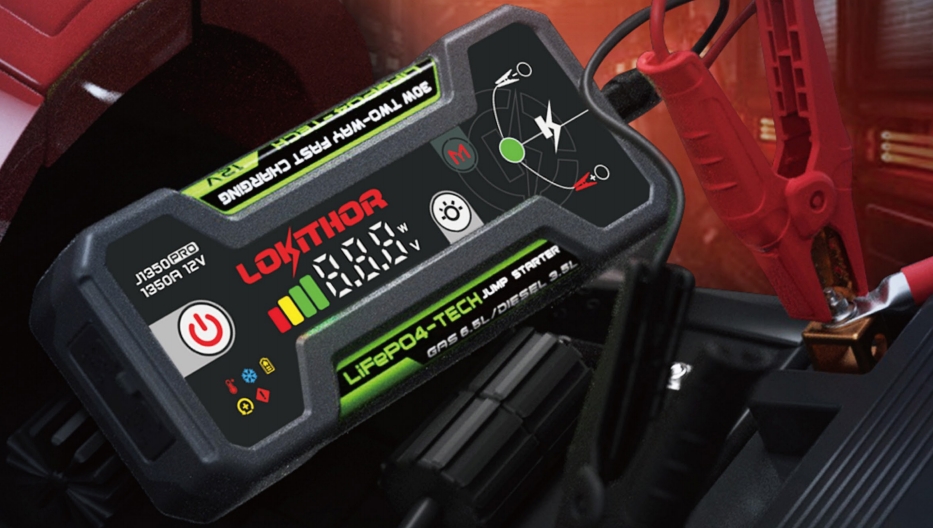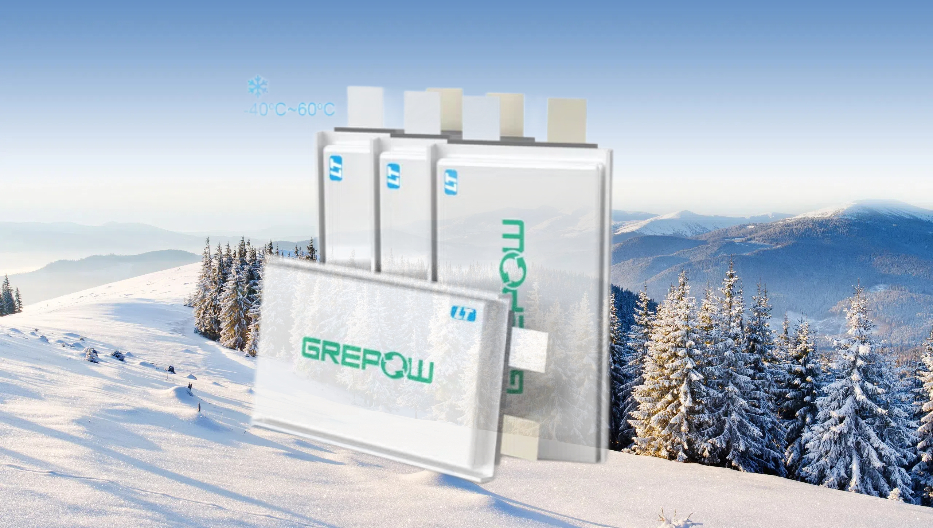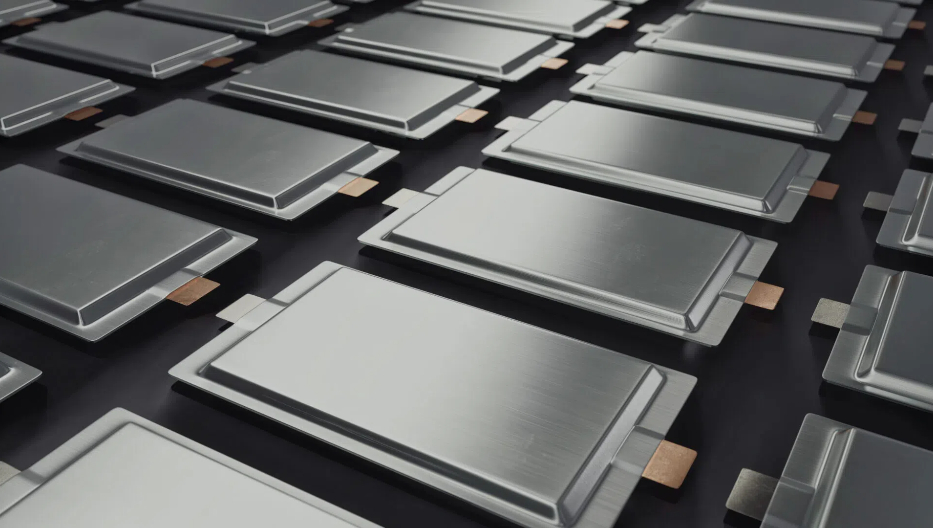Flexible Batteries will Change the Future of Smart Devices
The advancement of technology and the popularity of smart craze have also made electronic devices more and more colorful. Smart hardware, smartphones, smart wearable devices is also a trend in recent years, especially the rapid progress of electronic technology, but also let these electronic devices towards the thin and light, diversified, diversified, flexible direction, such as before the popular full-screen mobile phones, as well as Samsung, Apple and other manufacturers are to develop a new generation of foldable, bendable flexible electronic products.
This kind of flexible electronic products full of future science fiction appear frequently in a variety of electronic exhibitions to meet the public's imagination of electronic technology, but also to guide the direction of the development of electronic products, flexible electronics is obviously one of the future trends.
It is worth mentioning that, flexible electronics has been named one of the world's top ten scientific and technological achievements, it is predicted that it will bring about an electronic technology revolution. Today, this electronic technology revolution has quietly arrived under the market impetus.
Fueled by the broad market prospect, the development of flexible electronics technology is also changing rapidly, in which the biggest challenge in the development of flexible electronics is to adapt to the flexible energy storage devices. Traditional lithium batteries and supercapacitors are rigid, and when bent and folded, they are prone to cause separation of electrode materials and collectors, affecting electrochemical performance and even leading to short circuits and serious safety problems.
Therefore, in order to adapt to the development of the next generation of flexible electronic devices, flexible batteries have become a hotspot of research in recent years. GREPOW inventory of the recent top ten technical breakthroughs in the flexible batteries, to help you understand the current state of development of flexible batteries.
1. Flexible multifunctional bipolar all-solid-state lithium-ion battery
The National Institute of Science and Technology in Ulsan, South Korea, has developed a new flexible multifunctional bipolar all-solid-state lithium-ion battery that solves a common problem with bipolar lithium-ion batteries based on inorganic electrolytes.
The researchers are known to have prepared bipolar LIBs by solvent-free drying and UV curing-assisted multi-stage printing and developed a new flexible non-flammable gel electrolyte so that it can be used as a core component for printing electrodes and printing solid gel composite electrolytes. And this multi-stage printed bipolar battery preparation technique has great application potential as an efficient and scalable technology to bring the development of bipolar all-solid-state batteries to commercialization.
Lithium-ion batteries are not uncommon, now the mainstream electronics are using lithium-ion batteries, but the technology can break the characteristics of lithium batteries have been rigid, flexible multi-functional bipolar is undoubtedly a very big technological breakthrough.
2. Paper-based flexible supercapacitors
Seung Woo Lee, an assistant professor of mechanical engineering at Georgia Tech, and Jinhan Cho of Koryo University's Department of Chemical and Biological Engineering have developed a paper-based flexible supercapacitor. The supercapacitor uses metal nanoparticles coated with cellulose fibers in the paper to create supercapacitor electrodes with high energy and high power density, achieving the best performance of textile-based supercapacitors to date.
Research tests have shown that capacitors made using this technology can be folded thousands of times without affecting conductivity. In addition, the metallic paper-based supercapacitors have a maximum power and energy density of 15.1mW/cm2 and 267.3uW/cm2, respectively, which are substantially better than conventional paper or textile supercapacitors.
It can also be combined with flexible capacitors and energy harvesting devices to power applications such as biomedical sensors, consumer electronics, and special electronics.
In the same way as lithium batteries, ultracapacitors are rigid and not easily bent or folded. But the technology takes a different angle on materials and breaks the mold by developing a paper-based flexible supercapacitor based on textiles. If the problem can be further solved and made commercially available, it is likely to bring about change.
3. Graphene high-performance flexible batteries
In China, the new energy carbon materials team at the Qingdao Institute of Bioenergy and Processes, Chinese Academy of Sciences, in collaboration with the Institute of Chemistry, Chinese Academy of Sciences, has developed a graphene-based molecular material that changes the traditional concept of battery materials and enables the preparation of high-performance, flexible batteries.
It is understood that the electrochemical sodium storage capacity shown by this material in the test study of sodium-ion batteries is in the leading position among similar materials, which may become a new generation of high-performance flexible batteries. It brings new perspectives and new concepts to the research of China's future electrochemical energy storage devices, and will actively promote the progress of China's 13th Five-Year New Energy and New Materials Research Plan.
After fullerenes, carbon nanotubes, and graphene, graphene is a new all-carbon nanostructured material with abundant carbon chemical bonds, large conjugate system, wide surface spacing, and excellent chemical stability, which is regarded as one of the most stable synthetic isomers of diacetylene carbon. Due to its special electronic structure and excellent semiconductor performance similar to silicon, graphene is expected to be widely used in the field of electronics, semiconductors, and new energy.
4. Fiber-like solid-state lithium-ion flexible batteries
The University of Maryland has used 3D printing technology to produce fiber-like solid-state lithium-ion flexible batteries. The battery can maintain stable electrochemical properties in a bent state and can be combined with common fabrics in the future as an important energy storage device for wearable electronics.
It is worth mentioning that this preparation method is very simple and fast compared to other complex and sophisticated technologies. It may not be perfect in other aspects, but it provides new ideas for mass production of flexible lithium-ion batteries, which can also be effectively applied to other active material systems for flexible one-dimensional batteries.
The use of 3D printing technology has to be a new way of thinking, 3D printing technology has become very popular in recent years, and its cost and fabrication is also very easy and fast. For the flexible energy storage device industry, it is a worthy direction to think about.
5. Flexible solid-state supercapacitors
Ma Yanwei's group at the Institute of Electrical Engineering, Institute of Electrical Engineering, Chinese Academy of Sciences (IEE) has developed for the first time a high energy density flexible solid-state supercapacitor with a 3.5V voltage window using a multi-stage graphene composite electrode and ionic liquid gel polymer electrolyte. It is understood that this research was completed by the team of the Institute of Electrical Engineering in cooperation with Professor Ge Shibo of the Southwest University of Petroleum.
By adjusting the microstructure of the electrode and introducing ionic liquid gel electrolyte, the researchers succeeded in preparing a flexible solid-state supercapacitor with a wide voltage window, which effectively improved the energy density of the device. The flexible solid-state supercapacitor can still maintain more than 85% of its capacity after 10,000 cycles of charging and discharging, and 88% of its capacity after 1,000 cycles of continuous bending, with good electrochemical properties and excellent mechanical resistance to bending.
Graphene materials are not new to the market, and the concept of graphene batteries is familiar, but it has been in a state of technological development. This technological breakthrough provides an effective strategy for improving the energy density of flexible solid-state supercapacitors in the future.
6. Flexible calcium titanite solar cells
Professor Wu Chaoxin's team at Xi'an Jiaotong University's School of Telecommunication has discovered a way to achieve high-quality calcium titanite thin films through a simple method, resulting in an inverse planar heterojunction calcium titanite solar cell with a photoelectric conversion efficiency of 19.44%.
It is understood that after the researchers prepared a good calcium titanate film by spin-coating, the film was post-treated with ammonium thiocyanate, and the calcium titanate film underwent a process of decomposition and then recrystallization, resulting in a calcium titanate film with larger grains, better crystallinity, and fewer defects. The method applied to the flexible cell, the realization of the photoelectric conversion efficiency of 17.04% of the high-efficiency anti-planar heterojunction calcium titanate flexible cells, in the highest international flexible thin-film solar cell efficiency among.
The breakthrough of technology is to constantly look for more simple and effective solutions, the team of Professor Wu Chaoxin of Xi'an Jiaotong University discovered this method, which successfully pushed the efficiency of domestic flexible calcium titanate solar cells to the world's top level.
7. Flexible bio-flexible batteries
A research team at Binghamton University is developing a bacterial bioenergy battery produced entirely from textiles, by creating a bio-cell made entirely from textiles that could produce maximum power similar to that produced by paper-based microbial fuel cells prior to the use of such a battery.
The researchers say that the flexible textile battery is based on low-cost graphene material, the external use of simple screen printing technology, the electrode will be very stable due to the strong interaction between the ink and textiles, and has good operational safety and long cycle life, the battery itself also supports fast charging, the flexible material allows water washing. Under repeated stretching and cyclic torsion, these biomaterials, made entirely from textiles, have a stable power generation capability.
Such stretchable, flexible energy-powered devices could provide a standardized platform for textile-based biomaterials, with the potential for future applications in wearable electronics. And in contrast to flexible batteries, stretchable and bendable bio-flexible batteries can be used in a variety of irregular electronic products.
8. Flexible aluminum graphene batteries
Gao Chao team of Zhejiang University's Department of Polymer Science and Engineering has developed a new type of aluminum graphene battery. The researchers proposed the design principle of "three high and three continuous" graphene anode material, which makes the performance of aluminum graphene battery take a big step forward.
It is understood that the aluminum graphene battery is a flexible battery, it will be bent 10,000 times, but also can completely maintain the capacity, and the charging speed is very fast, only a few seconds to complete the charging time. And its range is also very strong, it can be cycled and charged 250,000 times and still have full power.
In addition, the battery is both heat and cold resistant and can work in environments ranging from -40 degrees Celsius to 120 degrees Celsius. In an environment of -30 degrees Celsius, this new battery can achieve 1,000 cycles of charging and discharging without loss of performance, while in an environment of 100 degrees Celsius, it can achieve 45,000 cycles of stable performance, showing a wide range of applications.
Cold resistance, high endurance, fast charging speed, flexibility, and other characteristics, is destined to be the future of smartphones or smart wearable depth of the perfect "partner". The biggest challenge is undoubtedly to solve the technical problems to achieve mass production and commercial landing.
9. Flexible calcium titanate solar cell as thick as paper
Green Printing Key Laboratory of the Chinese Academy of Sciences, Institute of Chemistry, Song Yanlin research group, using the "printing" breakthrough in flexible calcium titanate solar cells, successfully prepared calcium titanate flexible solar cells with a thickness and flexibility similar to a piece of magazine paper, is expected to provide a reliable power supply for flexible wearable electronic devices.
It is unimaginable that one of China's four ancient inventions, printing, is beginning to come to life in the new era. The research team's nano-assembly and printing of a honeycomb-shaped nano-scaffold of calcium titanate, and the construction of an "optical resonance cavity" inside it, have both improved the mechanical stability and photovoltaic conversion of flexible calcium titanate solar cells.
It is understood that the technology developed by the magazine paper size of the calcite flexible solar cells can be used in wearable devices, and even clothing, automotive glass film, and other places, through the absorption of sunlight into electricity to charge other devices, both environmentally friendly and practical.
10. A new type of flexible transparent electrode
The research group of Professor Wenyong Lai of Nanjing University of Posts and Telecommunications, in cooperation with the research group of Wenming Su of Suzhou Institute of Nanotechnology and Nano-bionics, Chinese Academy of Sciences, innovatively proposed the design idea of conductive polymer grid electrode and developed a new type of flexible transparent electrode with excellent comprehensive performance. A simple screen-printing technique has been established to overcome the problem of low-cost large-area preparation, and the current efficiency of the organic EL devices prepared by using it as an anode is 1.56 times higher than that of the devices using indium tin oxide (ITO) glass anode.
The electrode has high flexibility, high electrical conductivity, high light transmission characteristics, and has outstanding chemical stability, can be produced at low cost and patterned production, can be used as a transparent film electrode instead of transparent ITO electrode widely used in the construction of flexible organic EL devices, flexible organic solar cell devices, flexible organic field-effect transistor devices, and flexible energy storage devices.
11. Flexible lithium polymer batteries
Here is a test case of the bending performance of a GREPOW flexible shaped battery:Charge the battery to 3.83v and fix the battery to the surface of the white PVC card. Fix the cell pole card to the bending and torsion tester, 15 degrees forward and backward, and 30 degrees total distortion, for bending and torsion test.
After the bending and torsion test of the 0.45mm flexible battery for 9000 times, the surface of the cell was folded and the internal pole sheet had creases. The internal resistance increased by about 45%. The voltage before and after the bending and torsion basically remained unchanged.


Grepow's shaped batteries can be made to operate in environments with a low temperature of -50℃ to 50℃. Under low temperatures, the batteries can achieve a lower internal resistance and, thus, a high discharge rate. Compared with traditional Lithium Polymer batteries, Grepow's flexible shaped batteries have broken through the discharge temperature limits of -20℃ to 60℃.
They are able to discharge over 60% efficiency at 0.2C at -40℃ and discharge over 80% efficiency at 0.2C at -30℃. When charged at 20℃ to 30℃ by 0.2C, the capacity can maintain above 85% after 300 cycles. The batteries can be ready for mass production, and they have been widely used in cold climates and special products.
The Grepow flexible Lipo Battery can be customized into a variety of irregularly shaped batteries, and it can be used in a variety of applications, from wearable devices to portable electronics.


Developed countries all over the world are making great efforts in the field of flexible energy storage, in which China also stands at the forefront of the world. In recent years, there has been frequent good news about technological breakthroughs.
Flexible electronics is one of the important development directions of electronic products in the future. Therefore, it is of great urgency to solve the problem of flexible energy storage devices. The New Year is bound to have major technological breakthroughs. Of course, there are still many problems and challenges to realize the practical application of flexible energy storage devices, which cannot be achieved without the efforts of scientific researchers.
If you are interested in flexible batteries, please don't hesitate to contact us at any time!
Email: info@grepow.com
Click for more information on flexible batteries: https://www.grepow.com/page/shaped-battery.html
Articles related to flexible batteries:
A Review of Flexible Battery Manufacturers
A Flexible Battery With a Thickness of Less Than 1 mm has been Developed in Japan
Flexible Paper Battery Offers Future Power
Highly Flexible High-energy Textile Lithium Battery for Wearable Electronics
Related Articles
-

The Ultimate Guide to Grepow Jump Starter
2025-03-27 -

How to Choose Lithium Batteries for Cold Weather?
2024-09-19 -

Next-Generation eVTOL Battery Technology
2024-08-22


















































